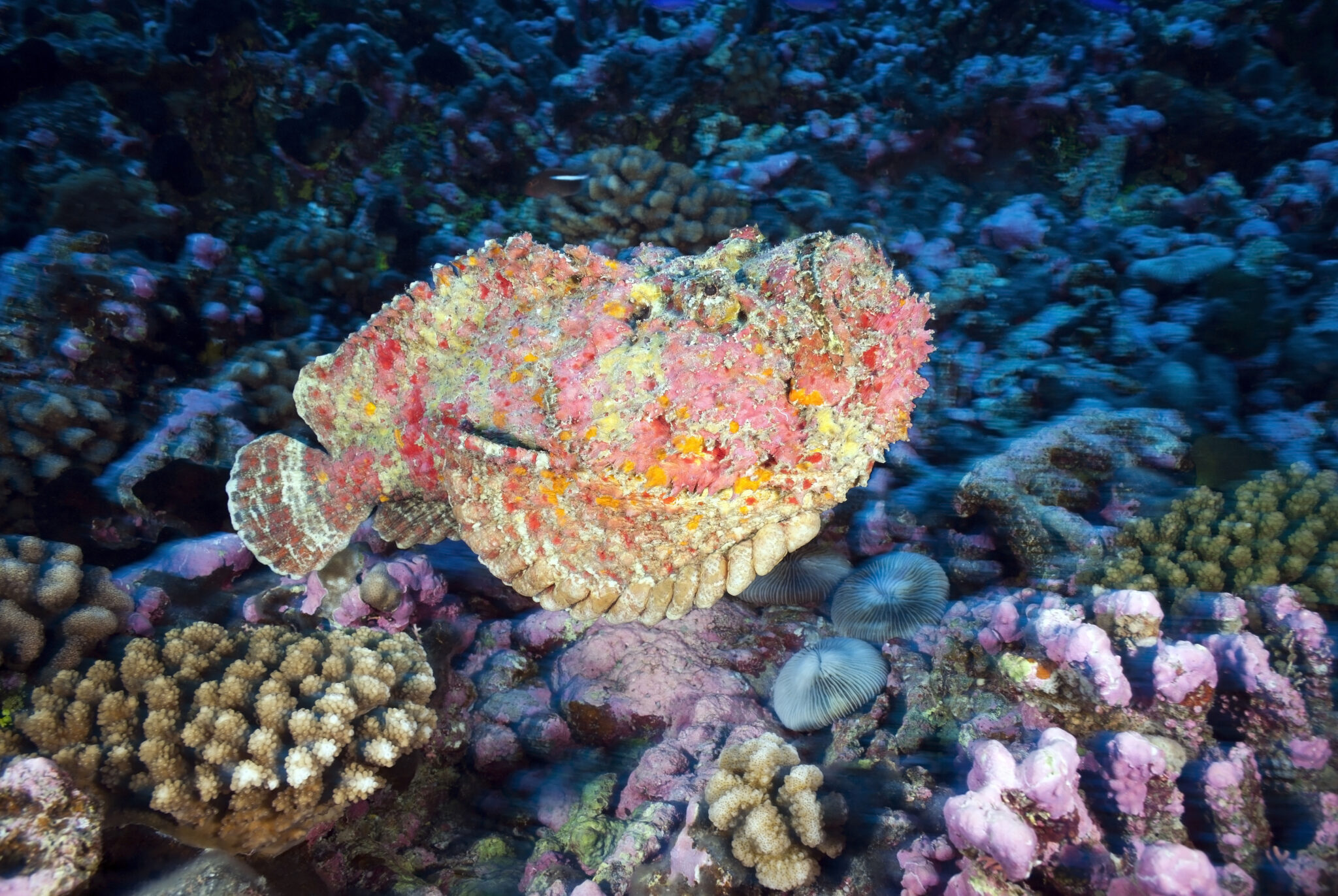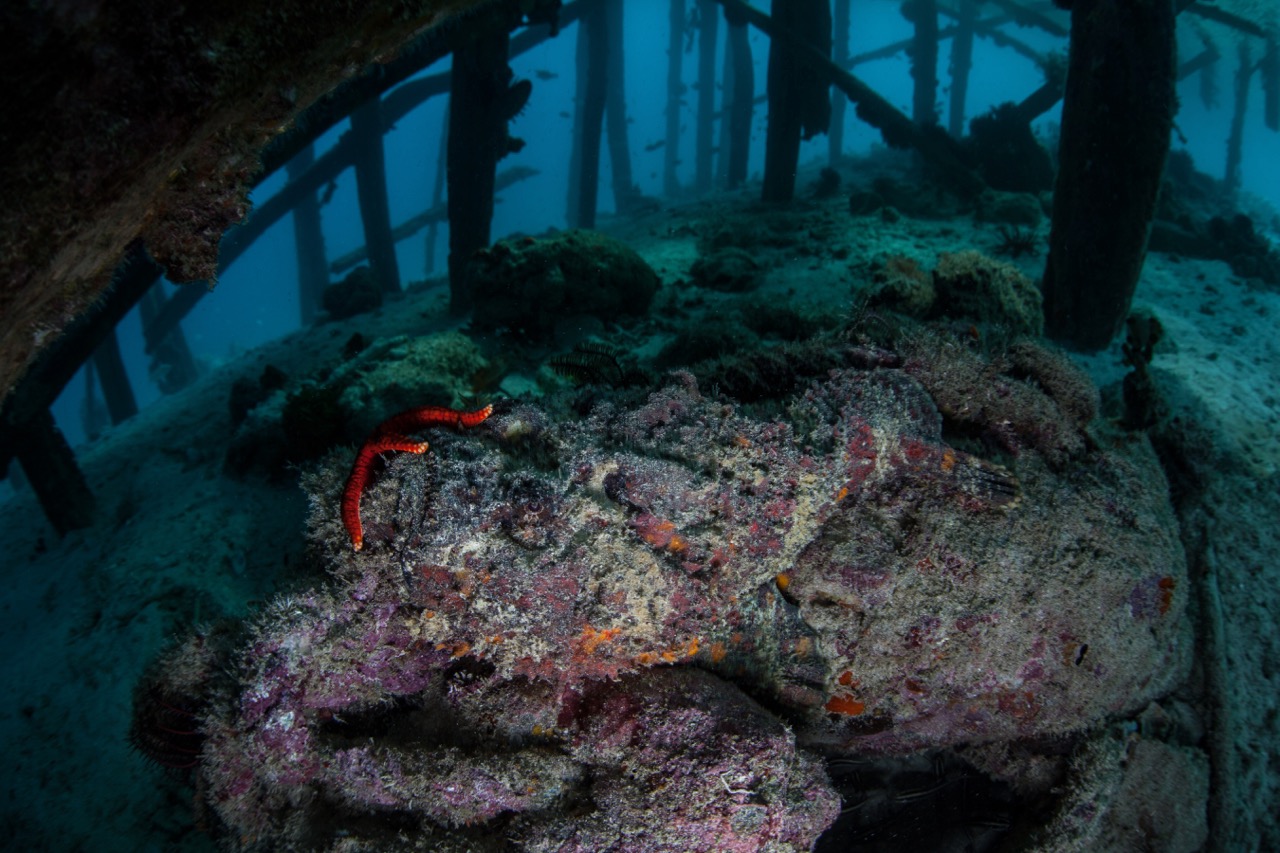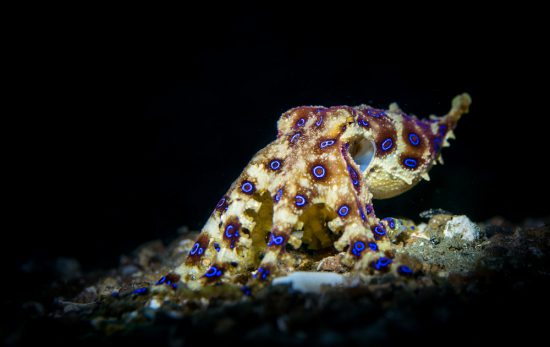In the underwater world, you don’t have to be the largest creature to be the biggest threat. The stonefish, which only reaches an average length of 30-40cm and around 2kg (5lbs) in weight, is the most venomous fish in the world. It earns this superlative thanks to the venomous sacs on each of its 13 spines, and packs a hefty punch to those who dare interfere. Fortunately, the threat to responsible divers is minuscule; avoid touching the reef and keep a safe distance if you are lucky enough to spot one.
Here are seven facts you’ll want to know about these interesting but toxic underwater critters should you come across them:
Stonefish Species
There are five species of stonefish to see in the coastal regions of the Indo-Pacific oceans, from Africa and the Red Sea, to Japan and Australia. Stonefish are often confused with scorpionfish. While they are different species, both do belong to the order Scorpaeniformes — along with lionfish and lumpsuckers.
Speed Hunting
As the most venomous fish in the sea, most would assume that stonefish kill their prey using the venom in their spines, but this is not the case. Instead, stonefish are ambush predators which capture their prey – typically small fish and crustaceans – with speed. To capture food, first, they wait for their prey to appear. Then, they swim fast and quickly attack, before swallowing their catch whole. The attack can last as little as 0.015 seconds! However, when not chasing their prey, stonefish actually swim very slowly.

Stonefish Mating Rituals
Stonefish lead a solitary life except during mating, of which little is known. Females are oviparous, laying eggs onto the seabed over which males release sperm. Around one million eggs are fertilized, and will be relatively well-developed after hatching. However, it can take three years to mature — so only a few actually make it that far!
Masters of Camouflage
Having excellent camouflage capabilities, stonefish can be difficult to notice. Dwelling in rocky or muddy bottoms, their brownish-grey textured skin blends seamlessly into the surroundings. It’s often exciting to spot the most disguised critters when diving, so do take notice of what’s hiding in the rocky seafloor or coral. And don’t forget to keep your eyes peeled for some of these other camouflaged critters too!

Defensive but Deadly
Don’t panic – stonefish will not go out of their way to attack you. Instead, they use their poison as a defence against predators. The venom, a mix of proteins, is usually released when pressure is applied to the stonefish’s spine – such as when it is being attacked by a predator or stepped on by a human.
Remember: If for whatever reason you accidentally step on a stonefish, seek immediate treatment. The venom can cause severe pain, heart failure and even death if left untreated. Use hot water for temporary relief from a stonefish sting, however seeking medical attention and anti-venom is essential.
Stonefish Survival Tactics
Stonefish can survive up to a huge 24 hours out of water, which is an uncommon trait among fish. They do this by absorbing oxygen through the skin, though eventually they will succumb to dehydration and suffocation.
Predator… and Prey
Despite the fearsome sting, larger creatures still predate on stonefish. This includes sharks and rays, but also humans. A delicacy in parts of Asia, heating the food or (for raw dishes) removing the venomous parts will render the fish harmless.
Interested in learning more about stonefish and other fish species in your area? The PADI – Fish Identification course might be just for you – contact your local PADI Dive Shop today to find out more.


